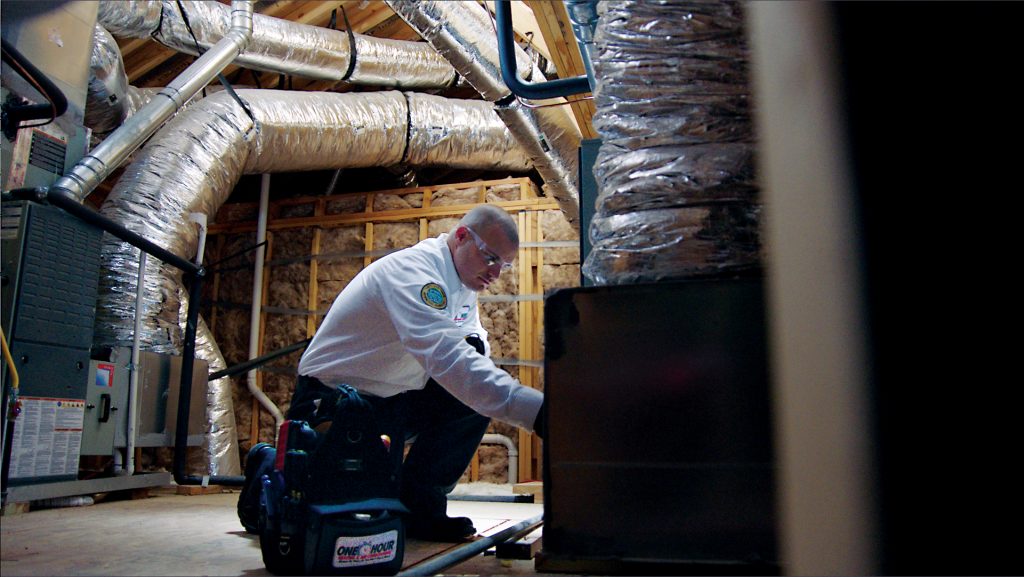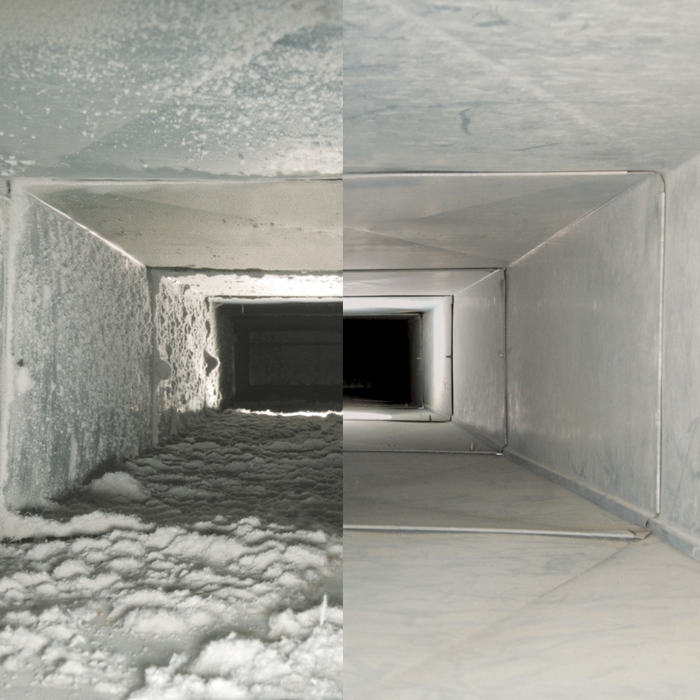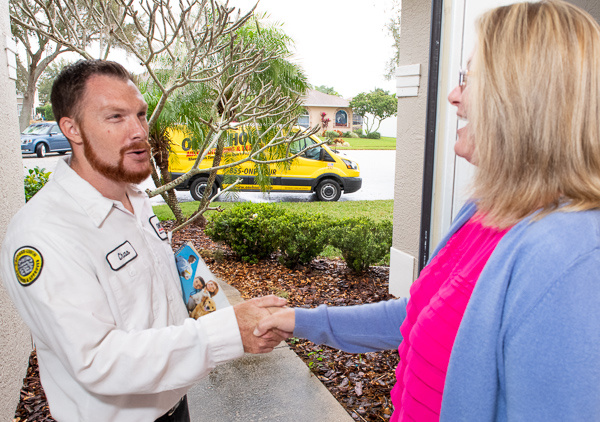It’s summertime right now, but it isn’t too early to think about furnace maintenance. With a properly maintained furnace, you never have to worry that your furnace will not be ready when you need to turn it on for the first time in the winter. If you fail to take care of your furnace, it might break down in the middle of the winter when you need it to work the most. To make sure that this doesn’t happen to you, here are some tips for furnace maintenance start maintaining your heating system now.
If your system is malfunctioning at the moment, the problem may be related to one of three components. These are the thermostat, the distribution system and the heat source. If the furnace isn’t running, the reason may be because the source is malfunctioning, or the system may not be receiving any power. If it is powered by oil or gas, these sources may not be igniting the unit.
You may be able to turn your heating system on, but the heat is not making its way into your rooms. In this case, the distribution system or the blower may be malfunctioning. If your thermostat is malfunctioning, it can keep your heating system from functioning. This could also be the reason that your furnace repeatedly turns itself on and off.
 Before You Work on Your Furnace Maintenance.
Before You Work on Your Furnace Maintenance.
Before you begin do-it-yourself furnace service, you must ensure that your heating system is receiving power. Inspect your main entrance panel for tripped circuit breakers or blown fuses. Your furnace may have a reset button near the motor housing. If this is the case, wait for at least 30 minutes until the motor cools down. Then, press the reset button. If your furnace fails to start at this point, wait for 30 minutes and then press the reset button again.
Your furnace may have a separate power switch, so make sure that you turn this switch on. Then, ensure that the thermostat is set properly. If you need to, increase the temperature by 5 degrees. For a gas system, make sure that the gas supply has been turned on and that the pilot light is also on. For a system that runs on oil, ensure that there is plenty of oil.
Do a Visual Furnace Inspection.
Don’t begin working on your furnace until after you have given it a visual inspection. If your furnace uses gas, you will need to make sure that the venting pipe is securely angled and fastened. The other tubes will also need to be fastened securely. Also, take this time to smell the gas line. If this tube smells like rotten eggs, your furnace is leaking gas.
Make Sure that the Flame Sensor Is Clean.
If the flame sensor in your gas furnace is dirty, this will be enough to stop the furnace from working. A good rule of thumb is to clean the flame sensor at least once a year. Remove the sensor by unscrewing it and then take hold of it at the bottom. Clean the sensor with an emery cloth and put it back in its place. Then, replace the door.
Perform Regular Dusting and Vacuuming.
One reason that a furnace doesn’t work very well is if it has dust, dirt or debris around it. In fact, dust, dirt and debris can cause the furnace to stop working altogether. You can clean the inside of your furnace with a paint brush that has a soft tip. This will allow you to loosen the dirt and debris without damaging the furnace’s components. Then, you can use a vacuum to blow away the debris.
Do an Inspection of the Thermostat Wires.
With the power off and the doors removed, pull lightly on the thermostat wires to ensure that they fit properly and are tight.
Remove Water from the Drainage Tube.
If you have a propane or natural gas furnace, it will produce water while it is heating your home. The furnace releases some of this water by converting it into exhaust steam and blowing it out, but the rest drains out to the drip pan from the power exhaust manifold. In the event that the drainage tube clogs, it can fill the manifold with water, and the system’s flame sensor would turn your system off. Remove the drainage tube from the manifold so that you can clean it by blowing compressed air through the drainpipe and tube.
Replace the Furnace’s Filter.
The filter is highly important because it sends heat throughout your house. You will find the filter where the return duct enters your furnace. Particulates that are in the air will be removed by the filter before the air enters your furnace to be heated. These particulates include spores, bacteria, pet dander, pollen, dust mites and dust, so the filter has a very important job.
You don’t have to spend a lot of money on your filters because inexpensive filters work very well to keep the particulates mentioned above out of your home. However, more expensive filters tend to improve the quality of your air even more and are recommended for people with asthma or allergies.
When your air filter is dirty, it prevents the air from adequately flowing through your heating system, and it cannot work as it was designed to work. Therefore, you must change the air filter every 30 to 90 days. The air filters that are likely to last three months are the pleated variety, and they are more expensive.
 Clean the Ductwork and the Vents.
Clean the Ductwork and the Vents.
A heating system needs to be cleaned regularly for it to remain in good working order. You will need to perform a furnace inspection to ensure that all of the vents can be reached. The floor registers must not have any scraps of paper, dust, pet hair or debris. If there is anything nearby that can get into your vents, it can move toward your ductwork, and this will prevent your furnace from functioning at peak performance. Remove the floor registers and vacuum any messes that you find in the vicinity. It would be a good idea to have your ductwork professionally cleaned if it has been a long time since you had this done.
Ensure that the Household Vents Are Accessible.
Your heating system cannot work properly if the air cannot circulate freely throughout the system. To ensure that this can happen, every part of your furnace must be in working order. It also means that nothing is obstructing your vents and that they are fully functional. Every vent needs to be open and adjusted so that the air can flow freely. There shouldn’t be any household items, boxes or furniture that block them. If a vent becomes blocked, the furnace will be forced to work harder and less efficiently. This will result in the furnace becoming dysfunctional before its time.
Ensure that the Blower Motor Is in Top Condition.
The blower motor is the piece of equipment that drives the fan that moves the air through the system. First, the heating element heats the exchanger until it is the appropriate temperature. Then, the blower motor can push the heated air through the heat exchanger. This is how the air becomes warm and moves throughout the house.
The blower motor has several important parts, and if you aren’t maintaining these parts, the furnace will begin to break down. If the blower is very noisy, this may be because the blower’s electric motor is experiencing a problem. It could also mean that the blower wheel is having the issue. If you are hearing shrill sounds, this could be because two metal surfaces are rubbing up against each other. One example is when the blower wheel loosens and begins to scrape the internal housing. If you hear loud humming, this may be because of an electrical issue. You will need an electrician to diagnose the problem and provide a solution before your heating system becomes irreparably damaged.
Reduce the Amount of Heat that Is Needed to Heat Your Home.
If your home’s structural shell is weak, cold air can find its way in, and the heat can find its way out. You can reduce your heat load by sealing your house’s envelope. You can determine where your house is losing heat by asking an HVAC contractor to provide you with a home energy audit. This professional will use infrared cameras and other specialized equipment to find the areas that are losing the most heat. Then, you can learn where the most advantageous locations are for improving your home. For example, you may be advised to add insulation in your attic, seal and insulate your ductwork, and weather strip your doors and windows.
Keep Flammable Objects Away from Your Furnace.
Furnaces usually exist in the storage room, the crawl space or the basement, but a furnace was not meant to function with anything around it. Therefore, you must not place flammable items near your furnace, such as boxes, gasoline, aerosols, paint or clothes.
 Before You Work on Your
Before You Work on Your  Clean the Ductwork and the Vents.
Clean the Ductwork and the Vents.
